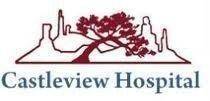В
Cardiovascular disease is the leading cause of death in the United States – one in three deaths is from heart disease and stroke.
В
During the month of February, Castleview Hospital and organizations such as the American Heart Association, the Centers for Disease Control and Prevention (CDC) and the National Heart Lung and Blood Institute work to elevate awareness of cardiovascular disease and promote heart health within our community and across the country.
So what is heart disease? Heart disease, or cardiovascular disease, refers to problems inhibiting the heart’s ability to properly function and circulate blood through the body. Many of these problems are related to atherosclerosis – the process of a substance called plaque building up in the walls of the arteries. Plaque buildup narrows the arteries and makes it harder for blood to flow through. This increases the risk off a blood clot forming, which can stop blood flow and potentially cause a heart attack, stroke, or even cardiac arrest.
Knowing the risks of heart disease is an important first step to protecting yourself. The six major risks, as identified by the American Heart Association, are high cholesterol, high blood pressure, smoking, diabetes, being overweight, and physical inactivity.
“If you eat well, exercise, stay smoke-free and monitor your stress, you’re on the right track. These behaviors are essential to living a heart-healthy life and can significantly reduce your risk of heart disease,” said Dr. Matthew Brady of Castleview Hospital. “It is equally as important to know the warning signs and respond quickly if you or someone around you is experiencing life-threatening symptoms of heart disease or stroke.”
Heart attacks, stroke and cardiac arrest are all life-threatening, and every second counts in regard to response time and treatment. If you or someone around you is experiencing any of the following symptoms identified by the American Heart Association, call 9-1-1 immediately to receive help and treatment as quickly as possible.
Symptoms of a heart attack:
– Chest discomfort. Most heart attacks involve discomfort in the center of the chest that lasts more than a few minutes, or that goes away and comes back. It can feel like uncomfortable pressure, squeezing, fullness or pain.
– Discomfort in other areas of the upper body. Symptoms can include pain or discomfort in one or both arms, the back, neck, jaw or stomach.
– Shortness of breath with or without chest discomfort.
– Other signs may include breaking out in a cold sweat, nausea or lightheadedness.
Symptoms of a stroke:
– Face drooping. If you notice one side of your or someone else’s face drooping, or if it is numb, this is a telltale sign of a stroke. If you are uncertain, ask the person to smile.
– Arm weakness. Many stroke victims experience weakness or numbness in one arm.
– Speech difficulty. Speech may be slurred, prohibited or difficult to understand. If someone you are with is experiencing this, ask him or her to repeat a simple sentence, like “the sky is blue.” If he or she cannot, call 9-1-1 immediately.
Symptoms of cardiac arrest:
– Sudden loss of responsiveness – If the person does not respond when tapped on the shoulder, they are likely experiencing cardiac arrest.
– No normal breathing – The victim does not take a normal breath when you tilt the head up and check for at least five seconds.
Knowing these signs and symptoms can help save a life, including your own. To learn about more symptoms and steps you can take today to improve your heart health, talk to your physician or visit www.heart.org.
В

